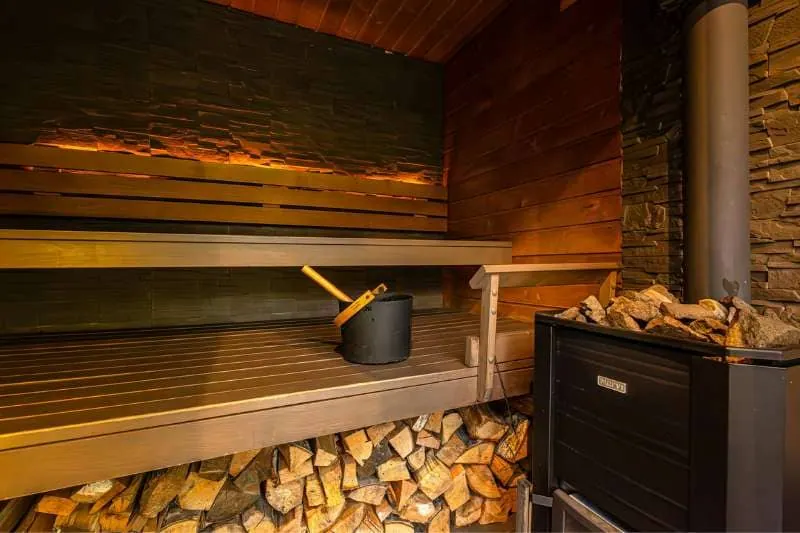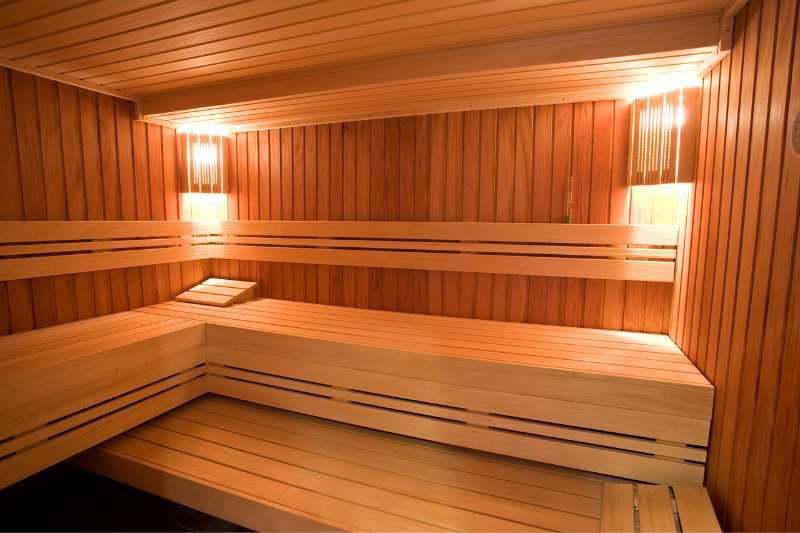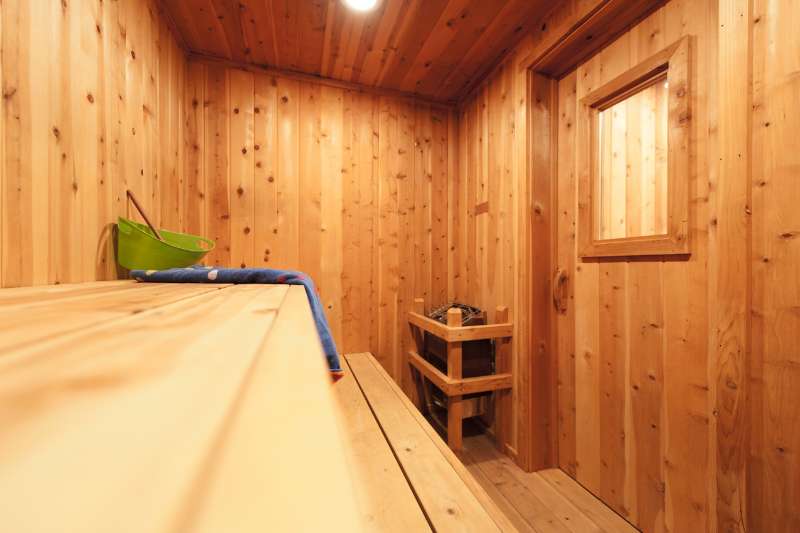What Type of Sauna is Best For Your health?

Did you know that using a sauna often can improve your mood and reduce pain? It has also been associated with a lower risk of heart disease and Alzheimer’s. Plus, it might help you live longer, too.
That’s why saunas are getting more and more popular. But picking the best sauna for these health perks might seem hard.
In this guide, we’ll help you decide what type of sauna is best for your health. Whether you prefer a classic sauna or an infrared one, we’ve got your back. Then, off you go on the path to feeling better and healthier.
Key Takeaways
- Choosing the Right Sauna: When choosing between sauna types, consider your health goals, whether detox, pain relief, relaxation, or heart health.
- Heart and Detox Benefits: Both traditional and infrared saunas improve heart health and aid in detoxification through increased blood flow and sweating.
- Pain Relief and Mental Well-being: Infrared saunas are effective for muscle and joint pain relief, while both sauna types help reduce stress and anxiety.
- Weight Loss and Skin Health: Traditional saunas support weight loss by increasing calorie burn, and infrared saunas improve skin texture by boosting collagen.
- Respiratory and Relaxation Benefits: Traditional saunas help with respiratory issues by opening airways, and both types promote relaxation and better sleep.
- Safety Tips: Keep sessions short, stay hydrated, cool down after use, and maintain a safe sauna environment.
| Medical Disclaimer The information provided in this article is for educational purposes only and is not intended as medical advice. Always consult with a qualified healthcare professional before starting any new health regimen, including the use of saunas. The author and publisher of this content are not responsible for any adverse effects or consequences resulting from the use of any suggestions, preparations, or procedures described in this article. |
Table of Contents
Understanding Sauna Basics and Health Connections
Let’s talk about saunas and their link to health.
The History and Evolution of Saunas
For centuries, people have used saunas all over the world. They clear their minds and bodies by sweating in these hot rooms. Many cultures, from the Mayans to the Finnish, have enjoyed saunas for a long time.
Related: History of Saunas
The Finnish, especially, have kept saunas in their hearts and homes for generations. People there would build saunas with logs and hot rocks to help clean, relax, and have fun together.
Related: Sauna Culture in Finland
Now, saunas come in all shapes and sizes and with different ways to get warm. This variety means everyone can find a sauna that’s right for them.

Physiological Reactions to Sauna Heat
Being in a sauna makes our body do many things. The heat improves blood flow by opening up our blood vessels. It also makes our heart work harder, moving more oxygen around our body. This is really good for our heart and health. Saunas have even been shown to lower high blood pressure.
What’s more, being in a sauna makes our brain release endorphins. These are natural chemicals that make us feel happy. So, saunas help with stress, lighten our mood, and make us feel great. They’re also good for our lungs, keeping them strong and helping us fight off sickness.
Saunas make you feel good and can even help with pain. So, using a sauna can really boost how you feel and help keep you healthy.
Hormesis: Beneficial Stress from Sauna Use
There’s a cool idea related to sauna use called hormesis. It means a bit of stress can be good for your body, making it stronger.
This stress helps us build up our defenses with things like heat shock proteins. They keep our cells strong and ready.
This “friendly stress” from saunas is thought to be a big reason why they’re so good for our health.
Comparing Sauna Types: Infrared vs Traditional
There are two main types of saunas: traditional and infrared. Traditional saunas heat the air with rocks, while infrared saunas warm your body with light. Each has its own good points for health and personal likes.
Traditional sauna temperature ranges from 150°F to 195°F. Infrared saunas stay cooler, from 110°F to 140°F. These temperatures matter for the benefits we get.
Traditional saunas give you a deep, traditional sauna feeling. The hot air makes you sweat a lot and feel really relaxed. They’re good for your heart, help you get rid of toxins, and can lift your mood.
Infrared saunas make use of light waves to heat your body without making the air too hot. This makes them easier for some people to handle. They’re also good for your health and can relax you, just like traditional saunas. Many people like them for their mild heat and special health benefits.
Choosing between infrared and traditional saunas is up to you. Think about what feels best for your body and what health goals you have in mind. Both can make you feel good and help you relax more.
We’ve learned a lot about saunas and why they’re good for us. Next, let’s dive into why traditional saunas are a great choice.
Exploring the Benefits of Traditional Saunas
Traditional saunas have been around for a long time. They offer many health perks. Let’s explore how these saunas boost your health.
Heat Exposure and Cardiovascular Health
The heat from traditional saunas is good for your heart. It makes your blood flow better. This helps keep your heart healthy. Using saunas often lowers the risk of heart and other health problems.
Some research shows that men who often use traditional saunas have a lower chance of dying suddenly or of heart problems.
So, sauna sessions are great for your heart and health overall.

Immunity Boost
Traditional saunas can even help your immune system. The heat helps your body make more white blood cells. White blood cells fight off sickness. So, saunas can make your body better at staying healthy. This means you could get sick less often and feel stronger overall.
A 2013 study suggests that sauna bathing can boost immunological defense in athletes.
Related: Saunas and Immunity
Detoxification and Skin Health
Saunas help with detoxing and keeping your skin healthy. The heat makes you sweat out toxins. This makes you feel and look better.
Your skin glows because more blood goes to it in a sauna.
Research shows that consistent sauna use results in detoxification by removing toxic elements like arsenic, cadmium, lead, and mercury.
Losing a Little Weight
Another plus of saunas is that they might help you lose some weight. Since they make you sweat, you might lose some water weight.
But remember, saunas aren’t a shortcut to losing a lot of weight. They’re best used with a healthy diet and exercise. They’re just a small part of staying fit.
Respiratory Health
Saunas can make breathing easier, too. The warm air can open your airways and clear up mucus. This is good news if you have asthma or allergies. Saunas can be a natural way to help your lungs work better.
Relaxation and Mental Well-being
Traditional saunas are excellent for relaxing and feeling good. The warmth and quiet in a sauna relax you. They lower stress and anxiety.
Regular sauna visits might lower the risk of some brain diseases. They help your mind and body stay healthy.
Research indicates that regular sauna use may lower the risk of dementia and Alzheimer’s disease in middle-aged men.
Related: Does Sauna Help With Anxiety?
Traditional saunas do a lot for your heart, skin, and mind. They have been cherished for health for a long time. So, jump into a traditional sauna and enjoy the many benefits.
Unlocking Infrared Sauna Health Benefits
A more recent innovation, infrared saunas have unique health benefits. We’ll look into how infrared saunas can boost your health overall in this part.
Pain Relief through Infrared Sauna Therapy
If muscle soreness or joint pain bothers you, infrared sauna therapy is great for relief. It uses deep heat to improve blood flow and relax tight muscles. Over time, this could mean less pain and better movement for you.
Related: Saunas for chronic back pain
Support for Weight Loss and Calorie-Burning
Infrared saunas are also handy for losing weight. They make you burn more calories by making your heart and body work harder. When your body regulates its temperature, you might see a drop in weight. Using infrared saunas while eating well and exercising can help with weight loss.

Relaxation and Enhanced Sleep Quality
Infrared saunas are a peaceful place to relax. They can help lower stress and encourage rest after a tough day. They might even make you sleep better by balancing your sleep hormones. You’ll feel calm and happy as serotonin, a feel-good hormone, gets a boost.
Disease Prevention and Cellular Health
Infrared saunas are also good for your cells and can help prevent sickness. They work by sweating out toxins at a cellular level. This makes your cells work better and strengthens your immune system. They also make heat shock proteins (HSPs) that help cells do their job well.
Using infrared saunas often can make your cells healthier. This means better health and less chance of getting sick.
Those dealing with skin parasites should review our evidence-based guide on whether saunas effectively treat scabies before choosing a sauna type.
Dive deeper into infrared saunas with our guide ‘What is an Infrared Sauna.’
Related: Infrared sauna Top Picks for 2024.
What Type of Sauna is Best for Your Health
Choosing the best sauna for your health depends on what you need. Saunas can help with detox, heart health, and making you feel good.
Optimal Sauna Selection for Detoxification Goals
The right sauna makes a big difference in detox goals. Traditional saunas, hot at 150-200°F, make you sweat intensely, which aids in the removal of toxins. They also have high humidity, making you sweat more and upping detox benefits.
Infrared saunas, cooler at 100-140°F, also help detox. They increase blood flow, making you sweat out more. This reaches deeper to pull toxins out from the skin.
A 2006 study found that infrared radiation improves skin texture and reduces wrinkles by boosting collagen production.
Related: Is It Possible to Sweat Out Alcohol In a Sauna?
Choosing the Right Sauna for Cardiovascular Health
For heart health, both traditional and infrared saunas are good.
Traditional saunas have key benefits for the heart. They lower the risks of heart issues and death. Using them often means lower blood pressure and less heart stiffness.
Infrared saunas are also good for your heart. They make your blood pressure better and your heart vessels less stiff.
Pick the sauna type you like for heart health wins.
Prioritizing Features for Relaxation and Mental Well-being
For calming down and feeling happier, both types of saunas work.
Traditional saunas‘ heat makes endorphins, cutting stress and anxiety. They also boost the immune system, helping you feel better overall.
Infrared saunas also make you feel good. They release feel-good chemicals, lifting mood and easing stress. They have pretty lights and sounds to make you relax more.
Think about what features will make your relaxation special.
Related: Sauna Decor & Lighting Ideas
Best Sauna for Pain Relief
Traditional saunas lower pain and help your muscles feel less tight, but if you mainly want to reduce pain, infrared saunas are great. They can lessen muscle and joint pain.
| Type of Sauna | Temperature Range (°F) | Main Benefits |
|---|---|---|
| Traditional Sauna | 150-195 | Cardiovascular health improvement, detoxification, relaxation, enhanced immune system function, skin health, weight loss, improved lung function, and mental well-being. |
| Infrared Sauna | 110-140 | Pain relief, relaxation, improved sleep, weight loss support, disease prevention, cellular health, and building immunity. |
By thinking about your health needs, you can pick the perfect sauna.
Accessibility and Practical Considerations
It’s also key to think about how and where you’ll use the sauna.
Check if you have enough room at home or the gym. Pick a sauna that will fit well in your space.
It also matters that you can get into the sauna easily, especially if moving around is hard for you. In this case, pay attention to the sauna’s entrance and inside design.
Traditional saunas need more space and power than infrared saunas. Infrared saunas save energy and are often smaller.
Think about fun additions, too, like backrests, benches, or special lights and scents. These can make using the sauna even better.
By thinking about these points, you can add a sauna to your life without any stress.
The goal is to find a sauna that really helps with your health needs. Also, make sure it will be easy and enjoyable to use.

How to Safely Integrate Sauna Use Into Your Lifestyle
Enjoying saunas is great. But keeping safe is super important. Just follow some easy tips to make your sauna time fun and good for you.
- Limit your sauna session duration: Start short, like 5 to 10 minutes, and go longer as you get used to it. You can do about 4 to 7 sessions a week for 20 minutes each. Make sure it’s not too hot, between 176° to 212° Fahrenheit.
- Stay hydrated: Drink water before, during, and after sauna time. This will prevent dehydration and help your body stay healthy.
- Cool down after each sauna session: Take it easy after saunas. Let your body get back to normal slowly. This helps you move on to other things safely.
- Maintain a safe sauna environment: Keep your sauna in good shape. Follow the rules for cleaning, checking temperature, and making sure it’s well-ventilated. A well-kept sauna is a safe sauna.
If you’re not feeling well or have heart problems, check with a doctor before using saunas.
Don’t drink alcohol before or while in the sauna. It can make you dehydrated and cause other problems. So, it’s best to skip the drinks when using the sauna.
Always listen to your body. If you feel bad, step out of the sauna. Staying safe means you can enjoy saunas and feel their great benefits.
| SAUNA SAFETY TIPS | SAFE SAUNA USE RECOMMENDATIONS |
|---|---|
| Limit your sauna session duration | Start with shorter sessions and gradually increase duration |
| Stay hydrated | Drink water before, during, and after sauna sessions |
| Cool down after each sauna session | Allow your body temperature to return to normal gradually |
| Maintain a safe sauna environment | Follow manufacturer guidelines for installation and maintenance |
Conclusion
We talked about the good points of traditional and infrared saunas. Each type has its own special benefits. When picking the best sauna for your health, look at your goals and what you need.
Traditional saunas are an old favorite, helping with heart health and detoxing. They also help you relax. On the other hand, infrared saunas have their own perks. They deeply relax your muscles, may ease pain, and could help with ongoing muscle and joint issues.
Saunas can be really good for you, but there are also some risks. People react differently to saunas. Before you start using a sauna regularly, it’s smart to talk to a doctor.
Think about what you want for your health and what each sauna type offers. Decide based on what seems best for you. The correct sauna choice will boost your health benefits and make using a sauna a great experience.
FAQs About What Type of Sauna is Best For Your Health
1. Which is better, an infrared or a traditional sauna?
It depends on your health goals. Traditional saunas are better for cardiovascular health and deep relaxation, while infrared saunas are excellent for pain relief and detoxification. Both have unique benefits.
2. What are the cons of infrared sauna?
Infrared saunas may cause dehydration and overheating if not used properly. They might not provide the same deep sweating experience as traditional saunas, which some users prefer.
3. How long should you sit in a sauna?
Typically, 15-20 minutes is recommended for both traditional and infrared saunas. Start with shorter sessions and increase gradually as you get accustomed.
4. Can I sauna every day?
Yes, daily sauna use is generally safe for most people. However, it’s important to stay hydrated and listen to your body. Talk to a healthcare professional if you have health concerns.
5. What is the best sauna for detoxing?
Infrared saunas are often considered the best for detoxing as they penetrate deeper into the skin, promoting more thorough sweating and toxin removal.
6. Does sauna burn fat?
Saunas contribute to calorie burning by elevating your heart rate, similar to moderate exercise. However, the weight loss from a sauna session is primarily water weight from sweating, not fat loss. For effective fat loss, combine regular sauna use with a healthy diet and exercise.

“Become a Sauna Expert Overnight!”
Grab Your “FREE” Sauna E-book NOW!
Get your hands on the ultimate sauna manual. From history to DIY setups, our free guide has it all.

As a Chartered Accountant turned sauna enthusiast, I bring a unique blend of analytical skills and hands-on experience to the world of heat therapy. With over a decade dedicated to researching and testing sauna products and practices, I’ve developed a deep understanding of this field. A the founder of HomeInDepth.com, I provide reliable, easy-to-understand information on all aspects of saunas. My goal is to guide you through every step of your sauna journey, offering meticulously researched, unbiased advice to help you make informed decisions and create your perfect sauna experience. I’m always happy to hear from sauna lovers like you—feel free to leave questions or share your own tips in the comments below so we can learn together. Contact me on:







3 Comments